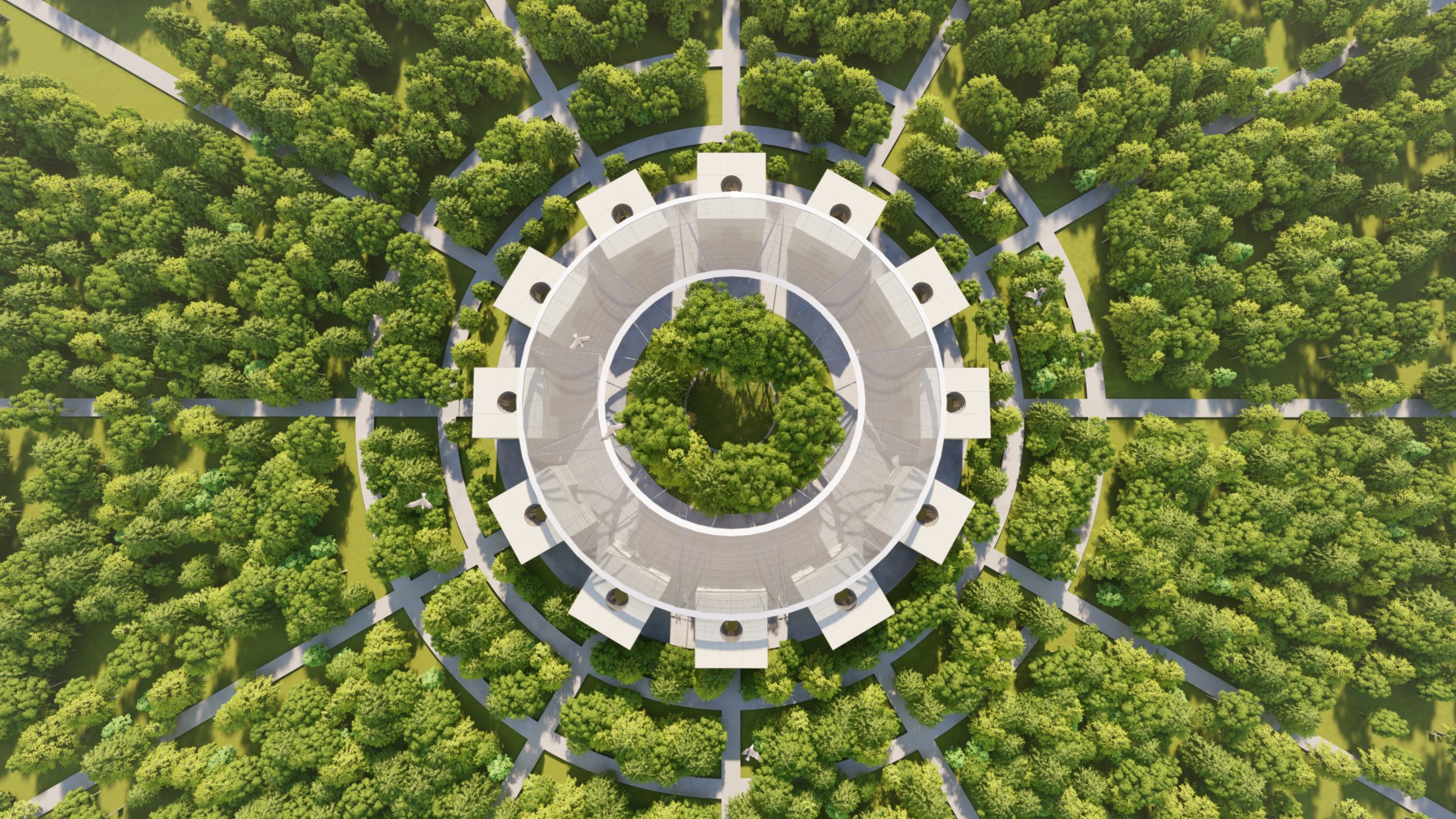
For us it’s quite simple. We try look at it as a ‘Long Life, Loose Fit’ approach. We see it as trying to get as much from a building and the process of constructing it as possible. This applies not only to the lifetime of the building itself but also to the materials used to construct it.

We as architects approach the circular economy at four levels, asking ourselves key questions at the start of the design process. First, at the very centre, is the building. Can we maintain or repair an existing structure? Small changes to the way we design buildings now will help enormously later when buildings are broken down and recycled.
Take our 55 Baker Street project, in which the 1950s building was considered to be at the end of its life. We proposed retaining the existing structure, and we were able to keep over 70% of the concrete frame and 50% of the existing fabric.


Internally, the soffits of the concrete slabs were exposed to provide thermal mass, and bespoke chilled beams were hung from the concrete ceilings to provide cooling. Externally, the cladding was upgraded to meet the highest standards through improved thermal and solar performance. This brought the existing building up to modern-day standards and provided renewed life to a building that would have otherwise been demolished.

Next we assess the components. Can we reuse or redistribute parts of the current fabric or potentially introduce modular or prefabricated construction? Like Meccano, a much-loved childhood toy, what can be reused or changed? How can we make the most of different pieces of kit? At our Pure Hammersmith site, we used prefabricated units manufactured off-site and inserted a finished product into the building structure.
We can now design in a way that allows components to be removed or deconstructed in the future and reconditioned for use again.

Third, we analyse the elements. Can we use reclaimed or refurbished elements? And how can we optimise materials or bring repetition to our design to enhance what we have? With 5 Broadgate, we optimised the size of the cladding panels to work within standard stainless steel coil widths, which minimised waste through off-cuts.

Finally, we consider the materials we use. This is really interesting for Make and something we embrace passionately. What is the recycled content of the materials we specify? What could it be? And what is their durability? The Copper Box was one of the few legacy buildings at the 2012 London Olympics, and we are now enormously proud to see this world-class sporting facility open to the community. The cladding has 70% recycled content, and you can see how it’s changing naturally over time, adding further intrigue to the building.

One day, all this copper will be rolled up and reused somewhere else. And that gives us enormous pride too.

With 5 Broadgate we analysed all the components within the building and, when selecting materials, considered the recycled content as part of the selection process. We then tracked all these elements through procurement and construction, enabling us to establish that 38.64% of total material value derives from reused and recycled content. By undertaking this study, we now have a benchmark to compare future projects against as we strive continue to take make further improvements.
So that’s four layers, each of which gives us the opportunity to maintain, reuse and recycle, and ensure a ‘Long Life, Loose Fit’ approach. The ultimate aim of course is to create a new generation of flexible buildings that extend the life of their constituents and that one day will be completely recyclable – something we believe is becoming increasingly plausible if we all embrace a circular economy.





































































































































































































































































